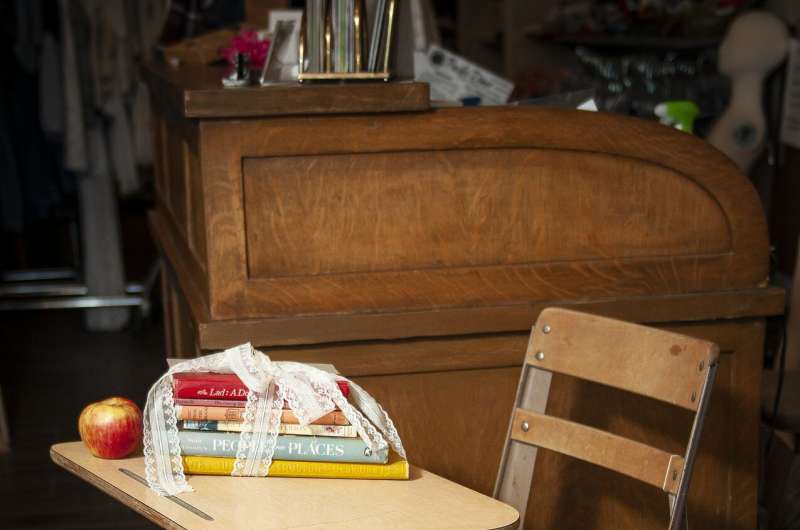
As the times get colder, lecturers not only experience the normal seasonal fight of retaining classrooms at a comfortable temperature but also hoping to cut down the COVID-19 virus count in the ecosystem. How to minimize virus unfold is important awareness for teachers—just as it was a century ago when the 1918 flu pandemic hit.
In the identical way that we assume persons to have an understanding of the fundamentals of nourishment when organizing a menu, we need a seem being familiar with of creating science to get the healthiest, most productive and satisfying environments in our properties. How can lecturers offer with classroom “fug” and COVID-19 this winter? Louise Starkey and Michael Donn demonstrate.
The fug challenge
A typical tactic in wintertime is to close classroom windows and transform on the heaters. Nevertheless, if you stroll into a crowded house that has been tightly shut for a time in opposition to the outside air, you will discover a unique transition into what may possibly politely be termed a fug.
This fug has substantial humidity and significant carbon dioxide (CO2) concentrations, and is a organic merchandise of persons respiration. If this air is not taken off and changed with contemporary air, CO2 concentrations will rise. And as this comes about, stuffiness will increase and the skill to concentrate drops noticeably.
Developing style and design usually aims for 1000 components per million (ppm)—or fewer—of CO2 in the air. This common was developed about 100 several years in the past and is based mostly on diluting body odor to an appropriate level.
But entire body odor just isn’t the only stress.
For centered tasks, our capacity to concentrate begins to lower at CO2 degrees higher than 1000 ppm and acute health indications get started at concentrations above 5000 ppm.
Modern technology can now convey to us when stages are far too significant: devices are being mounted in New Zealand lecture rooms to alert educational institutions when stages get to 800 ppm so they can act to reduce CO2.
COVID-19 in the blend
So, what can instructors and pupils do to decreased CO2 as nicely as virus ranges in the classroom?
In an period where by heat pumps heat, cool and thrust air about a room, it is tempting to see the stuffiness as solvable by working the heat pump. Heat pumps may perhaps make the air feel fresher, but they are just circulating current air without the need of switching CO2 levels or removing virus contained in just the air.
Therefore, these are not a very good possibility to aid focus or reduce the danger of virus spread.
What about air purifiers? They are remaining set up in some lecture rooms. These units recirculate the air in a place and “clean up” it possibly through UV radiation or by filters. So they can support lower virus stages in the air, but they do not reduced CO2 and can only be 50 percent the response.
Ventilation is the remedy to decreasing CO2 concentrations. Air ventilated from the outside into the classroom has decrease CO2 concentrations than the air “polluted” by students and teachers respiration out CO2. 1 Danish research team identified that “increased ventilation charges in classrooms have a beneficial effect on quick-expression focus and rational contemplating of children executing schoolwork.”
Ventilation can be through open up windows or a mechanical program that draws fresh new air from the outdoors. For a classroom of 33 individuals, .5 square meters of open up windows on opposite sides of the home supplies adequate air flow to keep CO2 ranges down and focus degrees up by replacing the air about 6 situations every hour.
This method just isn’t new. Pursuing the 1918 flu pandemic, “open air” school rooms were being created with windows on two sides of the place that could be opened to empower clean air to move as a result of.
Ventilating the area with refreshing air also cuts down the virus depend in the natural environment. Professor Richard Corsi, an air quality professional at the College of California Davis, estimates air in an enclosed room that has 700 to 800 ppm of CO2 could consist of .8 to 1 p.c COVID-19 virus for the duration of an outbreak when no a person is carrying a mask. Masks cut down this chance further more.
Opening home windows may well require improved heating—and noise distractions from outdoors the classroom will need to be managed. But this could be the selling price we have to pay to have comfortable and safe structures in winter.
Quotation:
Tackling air excellent and COVID-19 in the classroom (2022, June 17)
retrieved 18 June 2022
from https://phys.org/news/2022-06-tackling-air-top quality-covid-classroom.html
This document is topic to copyright. Aside from any honest working for the reason of non-public research or investigate, no
section may possibly be reproduced without the need of the created permission. The articles is presented for information and facts functions only.





More Stories
English Language Teaching and Learning: Creating a “Smart” Classroom
Science and Technology, IT And Space
Universal Design and Assistive Technology